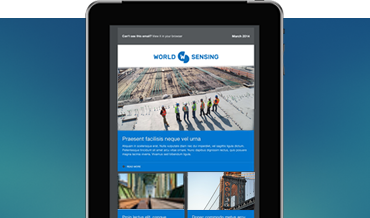What makes a wireless monitoring system reliable? Some key answers for the tunneling industry
During a webinar on Underground and Surface Wireless Monitoring in Tunnel Construction, our experts Maria Navarro, Sergio Luqui and Juan Pérez answered questions on how to implement a wireless system for monitoring tunnel construction activities.
What is the estimated long range distance between the sensor and the gateway considering the sensor will be underground in an open shaft?
In urban areas, up to 4 kilometers can be covered. We have successfully covered this type of installation in large tunneling construction projects and there should be no problem by covering the communication between node and gateway in an open shaft. If possible we’d recommend to try to have Line of Sight between node and gateway and to always conduct some coverage test previous to the final installation.
Can the LoRa network get signal coverage in tunnel and underground structures?
We have deployed long-range radio in tunnels and performed several tests in real installations and the actual coverage achieved is up to 4 kilometers in tunnels. This range could be reduced depending on the curvature. In our experience, by using the wireless system Worldsensing it is possible to cover the last mile between the excavation and the point where the gateway can be connected to the Internet.
Is the LoRa network able to transmit data to a remote server through FTP?
Yes, it is. Worldsensing system offers several data access possibilities, one of them being to push the data to an FTP. This is a feature included in the standard solution.
If we want to check the compatibility of our sensors and software with a wireless system like Worldsensing, do we need to send units to you or can you do a test on site?
You just need to send us the technical specifications for the sensor and we’ll be back to you confirming the compatibility. You can contact us at [email protected].
Do you set up each project system by different parameter yields?
Each project needs its specific design and thresholds have to be defined by the engineering team in charge of designing the project. These thresholds should be established depending on the behaviour of the structure, this has to be taken into account already in the project design phase. While the main function of Worldsensing is collecting data, the system is compatible with other platforms used to raise alarms when these thresholds are exceeded.
Can load cells be used for soil nails as well?
Yes, they can. Soil nailing is a passive system for bringing stability to soils, like for instance passive anchors. The difference is that passive anchors are tensioned by the structure itself when applied, so when there is a ground movement, the anchor is tensioned. Load cells and a corresponding node for reading them automatically and wirelessly can be used to control if this stabilization is achieved. Load cells can also be used to monitor rock bolts, which are typically used for tunneling support.
Based on your experience, around how much can you save if you’re shifting to a wireless method?
Several factors should be taken into consideration when evaluating possible savings: it will depend on the project design, type of sensors that need to be automated, and the sampling rate required. It is quite usual that some difficulties in the excavation arise once the works have started. In order to address this, monitoring data gets more significant for the teams and consequently sampling rates are increased. If you’re running an automatic monitoring system, you can increase the sampling rate at no additional cost. On the contrary, a manual system would require an operator to go to the site more frequently, thus increasing the cost of the monitoring project.
How does the construction method of the tunnel impact the choice of the monitoring system?
The tunneling method plays a role when selecting the monitoring solution and the data acquisition system. An important factor is if the tunnel is in an urban scenario or in an area with no buildings. In our experience, if you are installing sensors from surface, the most effective way to collect automatic readings in near-real time is using low-power wide-area networks because the piezometers will be spread. Since all the monitoring points will be installed from surface and also in the shafts, the only way to collect readings automatically and effectively is using wireless systems.
Do you have more questions? We’d love to hear from you if you have any queries not covered here: [email protected]
Watch the webinar Underground and Surface Wireless Monitoring in tunnel construction


